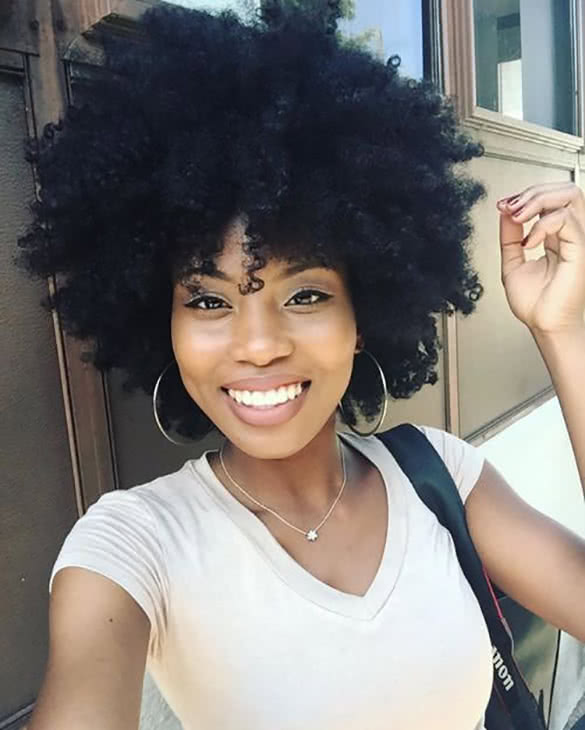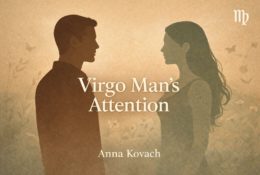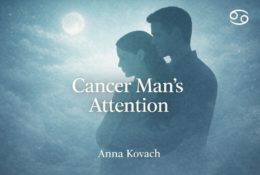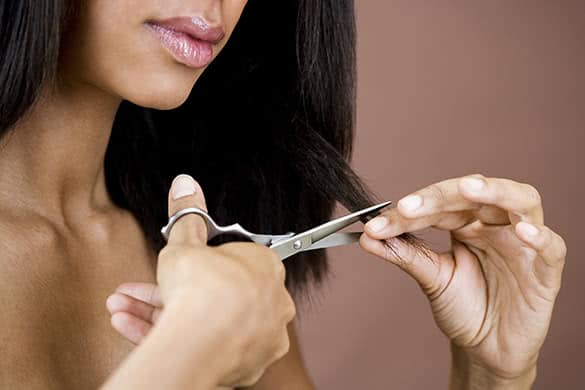The first thing to understand about the process of returning to your natural hair is that it is as much about your mind as it is about your hair. During this time, how you think about hair care and how you approach it must change in order for you to be successful.
You must be prepared to embrace your texture as it is and not as you hope it will be. Some of us have no idea what our natural texture will be like when we decide to transition because we’ve relaxed our hair for most of our lives.
It, therefore, becomes quite easy to mentally adopt the gorgeous hair of your hair crush and that could lead to disappointment. The fact is, while it is perfectly fine to admire and even be a little bit jealous, you have to be prepared to accept your hair as it comes.
Be prepared to love your hair because it’s yours and you’ll be off to an excellent start.
To big chop or not to big chop?
That is the question. Transitioning to natural hair without the big chop is a choice many women make because they fear to have short hair. To each is own.
The quickest way to return to natural is to do a big chop, but this is not for everyone. If you want to gradually make the change to natural, then a long transition is what you need.
Exactly how long will be determined by many factors, such as the rate at which your hair grows and how long you want your natural hair to be when you’re finally completely natural.
If your hair grows by half of an inch each month and you’d like to have 6 inches of hair when you are all natural, you’ll need to transition for at least a year.
You would also need to bear in mind that the longer you transition, the more likely you are to experience breakage at the line of demarcation. The line of demarcation is the point where your new growth (natural texture) meets the relaxed part of your hair. The line of demarcation is very vulnerable and breakage easily occurs at this point.
Protein treatments that work to strengthen the hair can help minimize breakage, however too much protein or too strong of a protein can cause hair to harden, become brittle and break.
Healthy hair requires a balance between protein for strength and water for moisture in order to prevent breakage. Any shift in the proper balance and breakage will result.
Trimming
You may try to avoid major cuts while you are transitioning but trimming to maintain the health of your hair is absolutely essential or your ends will just start breaking off anyway.
Get a trim at the beginning of your transitioning journey and then have regular trims to keep the ends in good condition every three to four months or as necessary. Do not be afraid of the scissors. It’s your best defense against split and damaged ends.
Do your research
When it comes to transitioning, knowledge is power. You’ll need some new tools, since transitioning means you’ll never be able to run a brush through your hair from root to ends ever again.
A fine-toothed comb won’t ever be good for anything, except, maybe if it has a rat tail that you can use for parting. There will be products (e.g. mineral oil) and practices (e.g. using heat) that you’ll need to avoid in order for your hair to thrive. When it comes to transition, ignorance is not bliss.
Separate fact from fiction
Fiction: You should only use products for your particular hair type.
Fact: Use whatever works for your hair. Focus on the ingredients and ignore the marketing hype.
Fiction: Hair type is important.
Fact: It’s more important to know your hair’s porosity than whether you are type 4a or 3c as porosity will affect how will your hair absorbs the products you attempt to use on it.
Fiction: Natural hair doesn’t grow.
Fact: Regardless of race or ethnicity, hair grows at an average on ½ an inch per month. Because this is average, the rate may be slower or faster in certain individuals.
Health and diet may also affect the rate of hair growth. Furthermore, natural hair is comprised of very fine strands that constantly coil or curl.
Each bend in the strand is a potential point of breakage and this susceptibility to breakage may cause it to appear that the hair is not growing when in fact it is, but it is just breaking at a similar or faster rate than growth occurs.
There are quite a few myths about natural hair and how to care for it out there which is why research is so important.
Transitioning styles

Curly sets are great for blending the natural and relaxed textures that make up transitioning hair. Wearing weaves, wigs, and braids are also great, however, they minimize the amount of interaction you have with your hair and this is not always the best course of action.
It is true that you want to minimize manipulation in order to minimize breakage but if you have too little interaction with your hair texture, you’ll get to the end of your transition with maybe 6 inches or more of natural hair and have no idea how to handle it.
Products
If you’re lucky, the products you used while relaxed may work fairly well with your natural texture, at least in the early stages. This will give you the opportunity to use these products up.
On the other hand, your natural texture may hate these products and you’ll have to go shopping pretty much from the onset, in order to find products that work for your hair.
It may take you a few tries to find products that work well for both textures. If you have friends and family who are already natural you can sample products before committing to purchase and you can have product swaps between you for the products that you haven’t work for you.
Get social
Social media can be your best friend and constant companion along your journey to return to natural, but only if you use it responsibly. When I started on my natural hair journey I had a voracious appetite for information.
I watched hundreds of tutorials and spent hours each day on YouTube. It was an obsession. In the years since I’ve become more selective and only watch a couple of videos a month.
I’m a pro at doing my hair now but every now and again it’s nice to unwind and watch a tutorial or two. Use the social information to gather and filter information but do not become consumed by it and don’t internalize everything you see there. Take the good. Leave the bad.
Know that one size doesn’t fit all

Just because it works for your best friend doesn’t mean it will work for you. You could even share DNA with someone and still get different results from using the same products.
Use what works for you and listen to your OWN hair and don’t be surprised if a product that’s worked for months or years suddenly stops working for your hair, or if one that never worked before suddenly starts working now. Natural hair is funny and fun like that. Like a box of chocolates.
Check the ingredients listing. ALWAYS
It’s fine to trust, but verify whenever possible. Marketing is just a ploy to get you to spend your money. Read your ingredients list and pay attention to the first 5 in particular.
Many companies will highlight particular ingredients on the packaging to draw your attention but when you check the listing it’s second from the bottom and below fragrance. That’s not worth your time or money, so before you waste both, check that you’re getting your money’s worth.
Patience is the key

Do not be alarmed if your journey starts off slowly. Some naturals grow long, full heads of hair in the first two years, however, it is just as likely for you to see huge results in growth after your third or fourth year into being natural.
You’ll be natural for the rest of your life. This race is about endurance and stamina, it’s not a sprint. Relax, pace yourself and have fun.













I would love to be natural. So unfortunate i relaxed my hair, i thought relaxer was the only way out but now i love our hair, the black woman’s pride, am five months old transitioning but i hate to cut my long hair. Cant wait to be a naturalist!